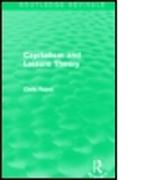- Start
- S Corporation Taxation (2024)
S Corporation Taxation (2024)
Angebote / Angebote:
S corporations, at present, are the largest tax filer in the United States of America. This book provides, in a single volume, a complete guide and reference tool for the tax practitioner to solve the many problems arising in regard to S corporate taxation. Code Sec. 199A generally allows shareholders of an S corporation a 20% deduction on S corporate income plus special rules for tangible property acquisitions. Because there were ambiguities in the statute, on August 8, 2019, the Treasury issued proposed regulations to interpret Code Sec. 199A. This 8th edition at �5 provides an extensive detailed discussion of the proposed regulations with many examples to explain the operation of Code Sec. 199A. While this book does not cover every single case, ruling, or procedure on a particular point, the reader is provided with the main case or point in a particular area, so that this situation can be understood quickly. To assist the reader, tax planning situations are presented throughout the book. As an example, Majestic Star Casino 2013-1 USTC �, 338 (3rd Cir. 2013) discussed at various points in the book held that the S election is a personal right in bankruptcy, not a property right, thus, if the shareholders of an S corporation revoke the S election just before filing the corporation's bankruptcy petition, it is not a transfer in fraud of creditors and the shareholders are not responsible for the S corporation's debts unless they personally guaranteed them. In re Health Diagnostic Laboratory, Inc. 578 B.R. 552, 126 AFTR 2d 2017 -6736 (Bankr.ED Va 2017) sustained this same result in the 4th Circuit. Scott Singer Installations, Inc. TC Memo 2016-161 discussed at �4.10 involved a case where a shareholder claimed his contributions of cash into his S corporation were loans, but there was no documentation of the loans on the corporate books. The contributions were made during a period of both corporate profitability and loss. The Court felt that during profitable periods, the contributions were loans, but during losses, were contributions to capital. This book is organized into sixteen chapters. Chapter 1 discusses the tax considerations in electing S corporate status, as well as the advantages and disadvantages of S corporate taxation. Chapters 2-10 detail operations of an S corporation, discussing the statutory requirements to be an S corporation, the types of taxpayer who can qualify as shareholders, considerations that one must make before converting a C corporation to S status, etc. Chapter 11 sets forth income and estate planning situations for S corporations. Chapter 12 covers changes which could occur in the life of an S corporation, namely, termination and revocation of the S corporate status, sale of S corporate stock, reorganization of the corporation, etc. Chapter 13 provides the reader with a comparison of S corporations to other business entities, such as one-person limited liability companies, partnerships, and C corporations. Chapter 14 discusses S corporation subsidiaries, Chapter 15, employee stock ownership plans ("ESOPs") for S corporations, and Chapter 16, a detailed discussion of the final and proposed regulations under Code Sec. 1411. The author attempts to keep this book current and up to date. Thus, �4 in Chapter 7 discusses the final tangible property regulations which went into effect as of January 1, 2014 and as aforesaid, �5 discusses in detail Code Sec. 199A and its proposed regulations. Further, the Appendices provide practical information for the tax practitioner to utilize in his or her practice. This book is not intended to apply to all circumstances, and the Forms contained herein may not be applicable in every situation. Further, the law is constantly changing in the field of S corporations. Accordingly, it is strongly urged that the current status of all statutes, case law, rulings, regulations, revenue procedures, announcements, notices, Forms and/or applications thereof be confirmed before relying on the information set forth in this book. It should be noted that in writing this book, the author has attempted to make the table of contents read like an index. The reader has three easy means to solve a problem or locate a topic: the Contents, Contents in Detail on page xiii and the Index. In addition, the author has provided a table of cases, statutes, treasury regulations, rulings, and procedures so that the reader will have an easy-to-use method to solve a specific problem. To assist the reader in practice, the Appendices supply sample language for various situations regarding S corporations. This book is intended to remove some of the mystery surrounding S corporations and their complexities. Because of its thoroughness, multitudinous examples, and tax pointers, this book should provide the reader with a unique resource tool to be utilized as a major addition to a tax library.
Fremdlagertitel. Lieferzeit unbestimmt




